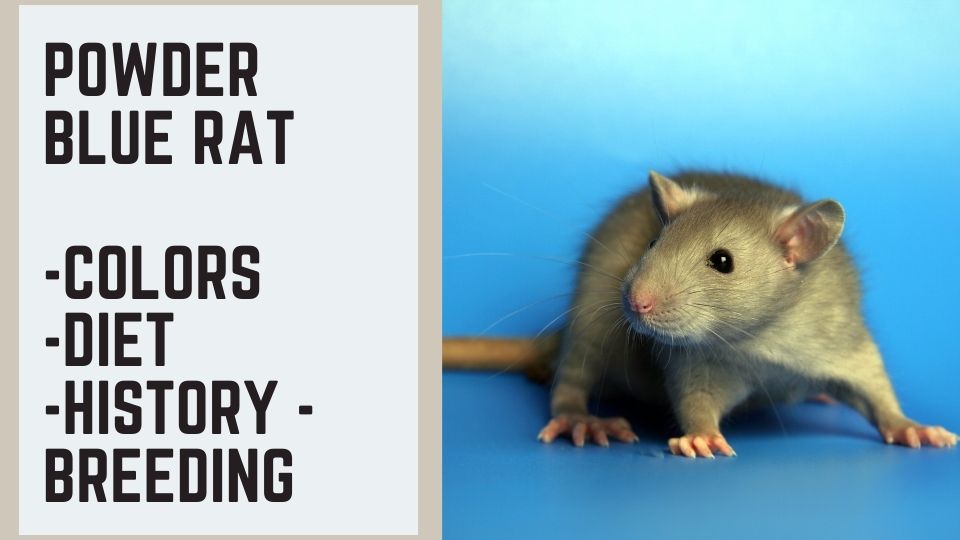British blue represents the darkest form of the blue coloring, and powder blue rats are the contrast to that.
This variety is not often bred as mating to a British blue (or black from British blue lines) might most likely fade away the powder blue. It would darken the top color and reduce or get rid of the pale undercoat.
Blues derived from platinum lines appear to be powder blue instead of any of the darker shades, and they would also be a good variety to run alongside powder blues.
There are a good number of British blues that have shown to possess pale undercoats, and/or pale top colors – really, these rats often make life tough for powder lines, when the USPs of the powders are only seen on the bench as faults for British blues.
Then there are the Russian blue rats. Not much is known about those. Powder blue rat colors are called sky blue rats at times.
Genetics: Non-agouti with the blue gene, selected for pale color (add)
NFRS standard: To be a pale dove blue color, with pale silver base fur. Pale silver underbelly. Should be distinctively different from that of the slate color of the blue rat. Color to be as even as possible, devoid of dinginess, white hairs, or patches. Foot color to match the top. Eyes Black or Ruby.
Powder Blue Rat History
The sky blue rats first showed up in a new area and then slowly spread across the world.
They first took pet stores in England and US by surprise and have since been fun to own!
Its color is captivating!
Blue rats can range in various colors from hue to light or richly dark colors. Check out these exquisite descriptions…
“Powder blue” which is a dusky silver with a bit of blue.
“American blue” which is a sparkling blue.
“British blue” which is an even deeper steel version.
Then they progressively become darker and become Russian blue rats – a line with variations of a pinkish-gray “Russian Dove” and pale blue-gray “Russian Silver”.
The next on the list isn’t officially blue but has a subtle bluish shine. There is the medium gray-brown “Mink rats, the blue-beige “Platinum” rats, and off-white “Pearl” rats with an icy blue cast!
Features
The Markings, Ears & Eyes of this rat are all blues!
Blue rats come banded or hooded, Berkshire or Irish, Dalmation or Self, … And the list goes on.
Other features include dumbo or standard ears, coal-black eyes, or mesmerizing ruby.
Generally, the darker their blue shade, the darker their eyes.
Temperament – Affectionate & playful
This fancy rat variety boasts of all characteristics it needs to become your companion.
Like all fancy rat breeds, good breeding and early handling play a big role.
Good healthy care of pet rats is easy:
- Provide them with a daily supply of fresh water
- Give them love and attention
- Feed them good foods
- Scrub their cage at least once a week.
Blue rat Feeding!
Some of these blue powder blue rats skin is delicate
Feeding rats small nibbles off greasy hamburgers or potato chips can cause a lot of health issues.
Why is that?
Too much protein and fat are supplied in the food.
Like caring parents, we recommend feeding a rat diet to your pet.




